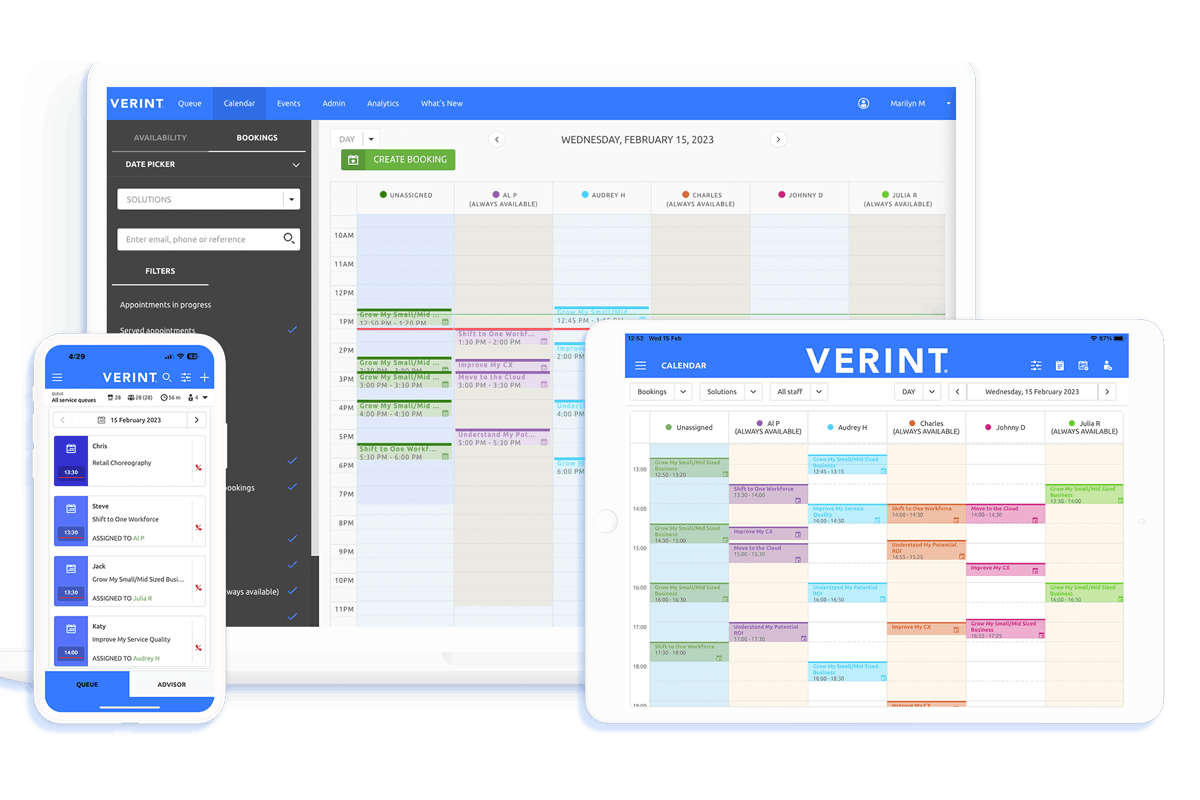Retail Choreography Strategy: Definition, Guide and Examples


Retail is in the midst of a revolution and modern consumers have all the power. They can switch between brands or share their candid opinions about a product with their friends, family and followers at the click of a button.
Fortunately, the Retail Choreography Strategy has recently emerged as the go-to strategy for iconic brands around the world who want to win the hearts and minds of the all-powerful modern consumer.
Keep reading to find out what makes this retail strategy particularly effective, which SaaS Retail Choreography solutions organizations are using, and which industries are seeing the greatest results.
What Is the Retail Choreography Strategy?
Retail Choreography is a game-changing retailing strategy that leading brands use to drive profitability by focusing on three key areas: customer experience, store operations and data analytics.
Think of Retail Choreography in the same way as dance choreography. Brand leaders use the omnichannel strategy to craft engaging customer routines across exciting store environments.
What Are the Three Pillars of Retail Choreography?
The three pillars of Retail Choreography are:
- Experience: Retailers need to deliver truly exceptional experiences if they’re to stay relevant in an age where consumers can instantly buy any product from any brand at the click of a few buttons.
- Operations: With greater strain on store margins than ever, operational efficiency is critical. Brands need to make the most out of their people and space. To maximize sales and drive customer loyalty, stores need to be highly organized and have a high morale among store associates.
- Data: Most businesses have limited data on their customer experience and store operations, rendering them unable to make the right strategic decisions to maximize profitability. However, the Retail Choreography Framework highlights that cutting-edge software technologies can help leading brands to make the right commercial decisions.
What Is the Retail Choreography Software suite?
The Retail Choreography software suite is a group of digital tools that help brands to create more engaging customer experience, optimize their store operations and collect more data to enhance decision making.
Typically, Retail Choreography Systems include:
Appointment Booking
With an Appointment Scheduling app, customers can check a retailer’s live service availability online and self-book an appointment. This cuts out the need for the customer to call or email retailers to make a booking.
Leading brands use Scheduling apps to offer in-person appointments and video appointments for customers that want personalized service from the comfort of their home.
Queue Management
Another key Retail Choreography solution, Queue Management, eliminates the need for your customers to stand in physical wait lines. Instead, your customers can join a digital queue via a front-of-house kiosk or store host.
Customers also receive SMS and emails with a countdown weblink that allows them to track their position in the queue in real time while they browse your store.
As their turn for service approaches, they’ll receive SMS notifications inviting them to return to the front of the store to begin service.
Event Management
Essentially, retailers use Event Booking software solutions to plan, promote and manage in-store and virtual events.
Whether you’re hosting workshops, classes or other types of events, your customers can easily register and share event URLs with friends and family.
Typically, Event Planning Apps also enable you to send automated reminders leading up to your events to keep the no-show rate as low as possible.
Task Management
You could be forgiven for thinking that Task Management tools are simply virtual to-do lists. After all, retailers primarily use Task Management to keep track of action items.
However, users can also share messages, training materials, helpful resources and much more.
Task Management tools are an important part of any effective Retail Choreography strategy because they give head office and store managers increased visibility across all in-store activities.
Retail Analytics
Business Intelligence (BI) systems give brand leaders deeper insights into what’s going on in their stores. Taking advantage of Retail Analytics can increase your visibility over key metrics such as appointment utilization and store team performance.
Ultimately, you’ll have all the data you need in a centralized place to make better strategic decisions that significantly improve customer engagement.
Learn more about Verint’s Retail Choreography solutions.
Why Is the Retail Choreography Strategy important?
According to our recent Engagement Capacity Gap™ study, 33 percent of CX leaders aren’t confident that they can effectively engage their customers across 2023. With rapidly rising customer expectations, it’s unsurprising that brand leaders are uncertain about what the future holds.
To make matters worse, retailers face a second challenge: tighter operational margins. As supply chain issues continue to plague businesses, delivering cost-effective services is becoming more difficult.
However, using old solutions to solve new problems isn’t the answer. Brands need to take innovative approaches to create the kind of customer-centric store experiences that drive ROI in the new retail landscape.
This is where the Retail Choreography Strategy comes into its own. With a primary focus on experiential retail and cost-optimization, brands using the strategy are uniquely positioned to expand.
Who Uses the Retail Choreography Strategy?
Brands from every kind of retail industry use the Retail Growth Strategy. With a vast array of use cases, the offering is enhancing business KPIs across the board.
Typically, retailers in the following industries use Retail Choreography:
- Luxury
- Beauty
- Fashion
- Optical
- Telco
- Department store
- Grocery
- Electronics
- Sports
- Outdoors
- Lingerie
- Homeware, garden and DIY
- Shoe
- Travel
- Automotive dealerships and garages
In fact, a number of other organizations outside of retail have also seen great results since deploying the Retail Choreography suite.
For instance, organizations in the following sectors also leverage Verint’s solutions:
- Banking
- Public Sector
- Education
- Healthcare
What Are the Potential Benefits of the Retail Choreography Strategy?
There are multiple benefits of using the omnichannel retail strategy, including:
- Increased sales: The better your in-store and digital offering, the higher your foot traffic. Typically, brands also see a higher average spend, greater customer retention and more cross-selling opportunities.
- Reduced operational costs: Make your operations more cost-effective by using an all-in-one Retail Choreography platform. Typically, retailers and banks also see team productivity increase, meaning you’re also getting more out of your teams.
- Increased loyalty: With a greater emphasis on the customer experience, you’re also more likely to retain customers, improve positive feedback on social media, and boost NPS scores.
- Better commercial decisions: Connecting your customer experience, operations and data through software means you’ll gain a comprehensive perspective on organizational performance. In turn, you’ll improve stock management, create more targeted marketing campaigns, and gain that all-important competitive advantage.
Championing Retail Choreography
Verint has seen first-hand how Retail Choreography can help enterprise brands to reach new audiences and acquire a major competitive edge. We’re proud to be transforming the customer experience across the globe, optimizing operational costs and centralizing data capture to help organizations make the right commercial decisions.
To find out more about how Verint Retail Choreography is helping iconic brands to optimize the customer experience, request a demo.
